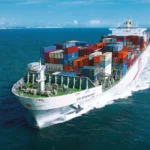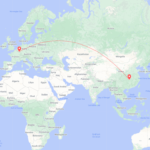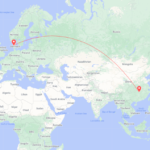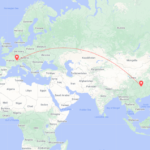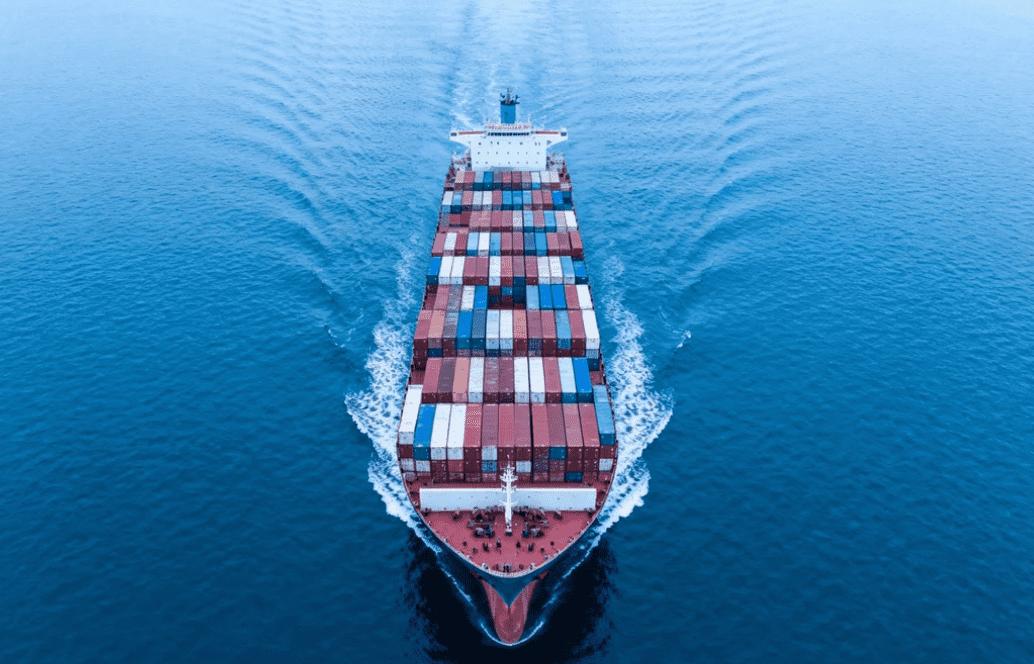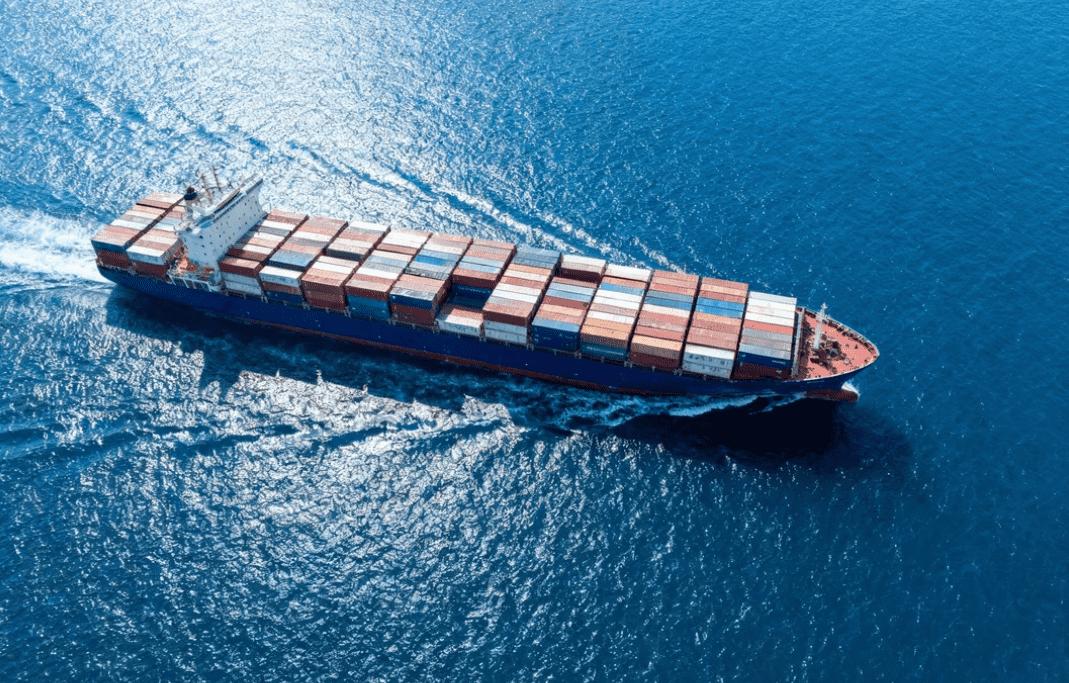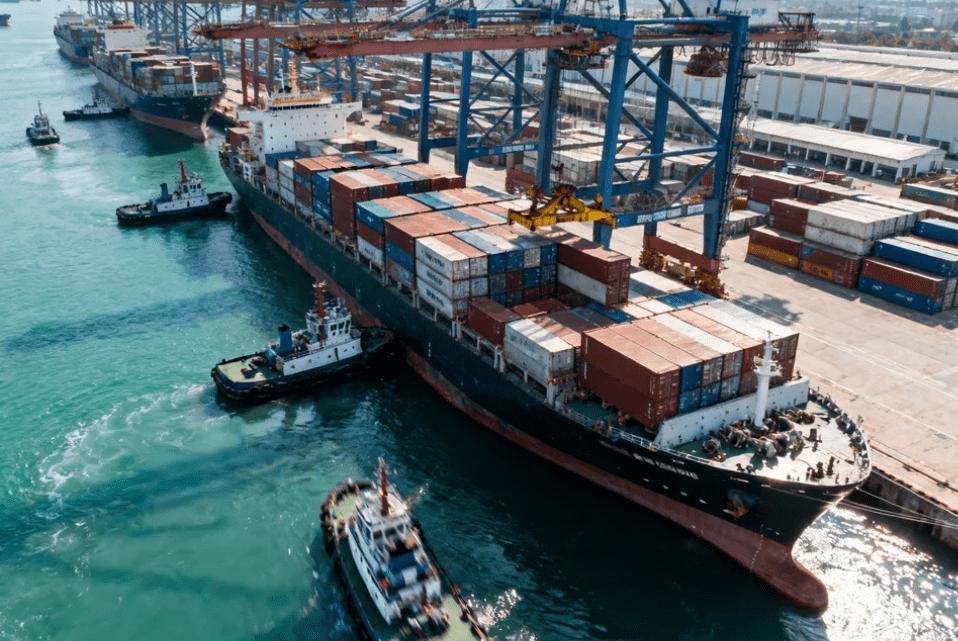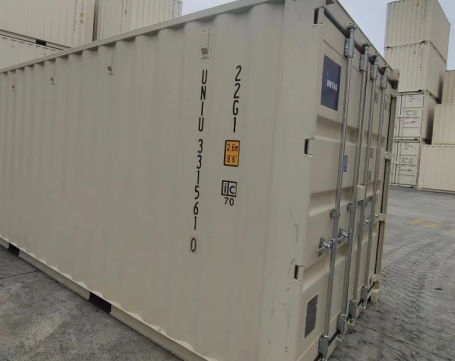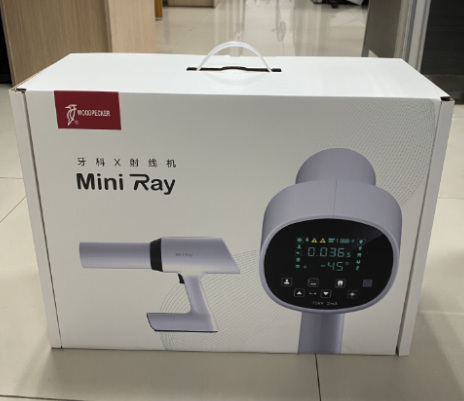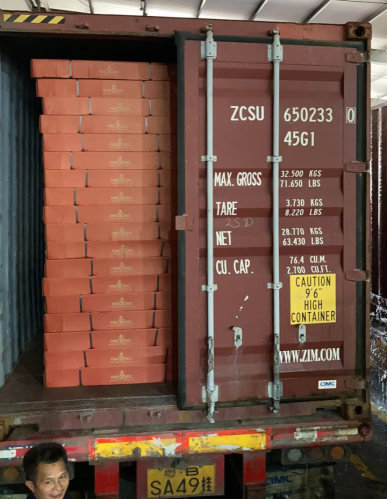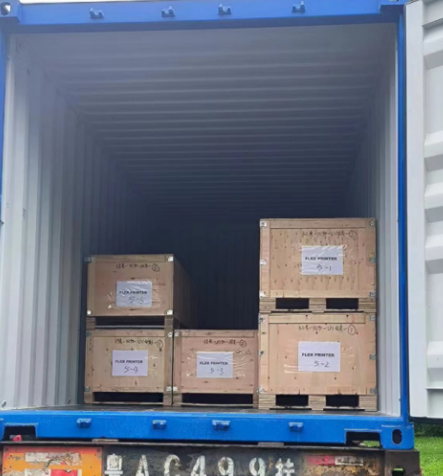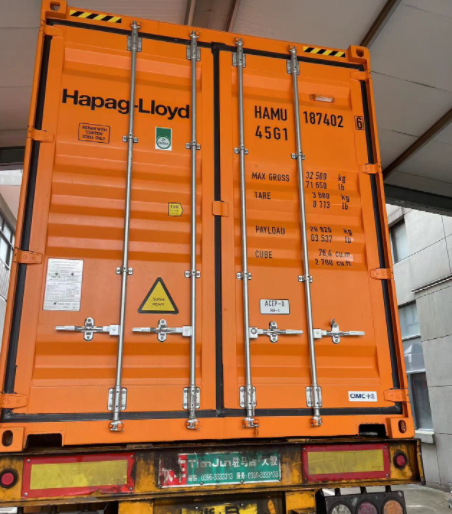Are you wondering how much the shipping rate from China to USA really is, and what factors influence these expenses? Whether you’re a business owner or an individual importer, understanding the nuances of sea freight, air freight, and door-to-door shipping is essential. In this comprehensive guide, we’ll break down shipping methods, costs, tariffs, and transit times—helping you make informed decisions for your next shipment from China to the USA.
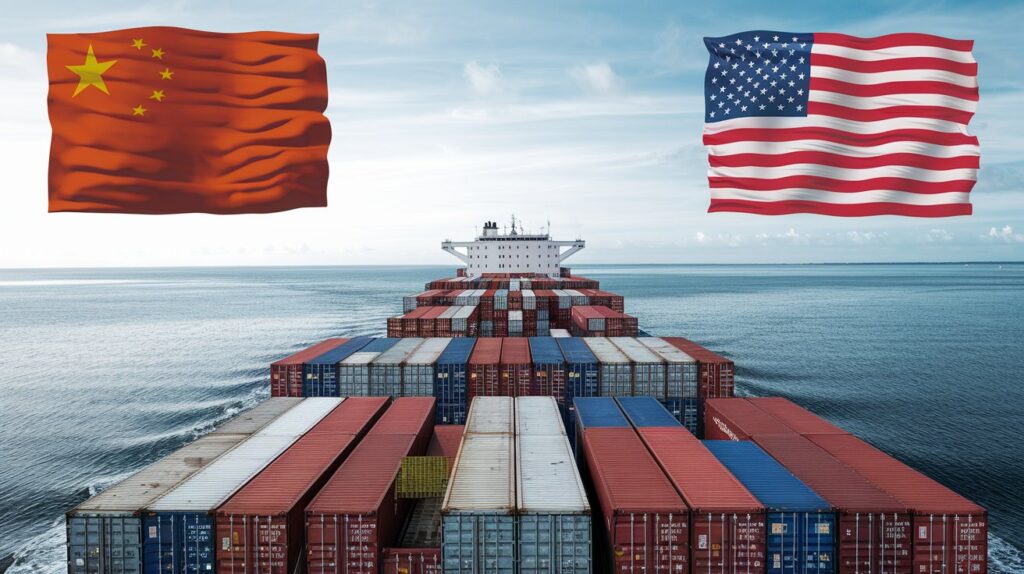
Shipping from China to USA
Shipping goods from China to the USA is a critical link in the global supply chain, especially for importers looking to balance cost, speed, and reliability. Understanding the available shipping methods, their costs, and their timelines is essential for effective budget and supply planning. Below, we cover the main shipping options from China to the USA—sea freight, air freight, express shipping, and door to door shipping—with a focus on their unique characteristics, benefits, and ideal use cases.
Sea Freight from China to USA
Sea freight is the most popular method for shipping large volumes or bulky cargo from China to the USA. It is cost-effective but slower compared to air or express options. There are two main types:
- Full Container Load (FCL): You rent the entire container (20ft or 40ft). Ideal for large shipments.
- Less than Container Load (LCL): Your goods share space with shipments from other importers. Best for small to medium loads.
Key China ports: Shanghai, Shenzhen, Ningbo, Qingdao, Guangzhou Key USA ports: Los Angeles, Long Beach, New York/New Jersey, Houston, Savannah
Advantages:
- Lowest cost per unit for large shipments
- Suitable for a wide range of goods, including machinery, electronics, and raw materials
- Extensive capacity and flexibility in scheduling
Limitations:
- Transit time is long, typically 20–40 days
- More complex customs and handling procedures
For more details on cost savings and timelines, see our article on how long is sea freight from China to USA.
Air Freight from China to USA
Air freight is the preferred option for urgent, high-value, or time-sensitive shipments. It is faster but more expensive than sea freight.
Major airports in China: Shanghai Pudong (PVG), Beijing Capital (PEK), Guangzhou Baiyun (CAN) Major airports in USA: Los Angeles (LAX), Chicago O’Hare (ORD), New York JFK (JFK)
Advantages:
- Fastest transit time (typically 3–7 days)
- High reliability and security
- Suitable for perishable goods, electronics, and fashion items
Limitations:
- Higher cost per kg
- Restrictions on hazardous or oversized cargo
Want to compare air and sea freight times or learn more about rates? Check out air freight from China to USA.
Express Shipping from China to USA
Express shipping utilizes international courier companies such as DHL, FedEx, UPS, and TNT. It is the fastest and most convenient way for small parcels or urgent documents.
Advantages:
- Fastest delivery (2–5 days)
- Door-to-door service
- Simplified tracking and customs processes
Limitations:
- Expensive, especially for heavy or voluminous shipments
- Weight and size restrictions
Door to Door Shipping from China to USA
Door to door shipping is an end-to-end logistics solution, covering pickup in China, international transportation, customs clearance, and delivery to your door in the USA. This option is convenient for businesses lacking logistics expertise. If you’re looking for more information on this service, see our guide to door to door shipping from China to USA.
Advantages:
- All-in-one service, reduces hassle
- Transparent cost structure
- Customs clearance handled by the provider
Limitations:
- Typically more expensive than port-to-port solutions
- Reliance on the freight forwarder’s network and capability
Dantful International Logistics offers comprehensive door to door shipping services, combining expertise in ocean freight, air freight, customs clearance, and last-mile delivery, ensuring a seamless and stress-free experience for global importers.
How much does it cost to ship from China to USA?
Shipping costs from China to the USA depend on several factors, including shipping method, cargo size and weight, shipping route, and the current market. Here’s a general overview of typical rates (as of Q3 2025):
| Shipping Method | Cost Range (USD) | Transit Time (Days) | Best For |
|---|---|---|---|
| Sea Freight (FCL) | $1,500–$4,000 (20ft) | 20–40 | Large shipments, cost efficiency |
| $2,800–$6,500 (40ft) | |||
| Sea Freight (LCL) | $50–$100 per CBM | 25–40 | Small to medium cargo |
| Air Freight | $4.5–$8.0 per kg | 3–7 | Urgent, high-value goods |
| Express Courier | $6.5–$12.0 per kg | 2–5 | Small parcels, urgent documents |
| Door to Door | $7.0–$12.0 per kg (air) | 5–10 | Hassle-free, all-inclusive delivery |
| $500–$2,500 (sea, <500kg) | 30–40 |
Note: Actual rates can fluctuate based on fuel prices, seasonality, and market demand. For the most accurate quote tailored to your shipment, contact Dantful International Logistics directly.
For more examples of rates and influencing factors, see our overview of shipping rates from China to USA.
Key Points Influencing Costs
- Cargo dimensions and weight: Higher weight/volume increases cost.
- Shipping route: Direct routes may cost more but are faster.
- Port charges and customs duties: Can vary greatly between U.S. ports.
- Incoterms: Determines responsibility for costs and risks.
For precise budgeting and optimal shipping solutions, partnering with an experienced freight forwarder like Dantful International Logistics ensures professional advice, competitive rates, and reliable service across ocean freight, air freight, customs clearance, insurance, and door-to-door delivery.
Cost of shipping 20ft & 40ft Container from China to USA
When importing goods from China to the USA, ocean freight is the most popular and cost-effective method, especially for large shipments. The two most common container sizes are 20ft and 40ft containers. Understanding the average shipping cost for these container sizes helps importers make informed decisions.
For more granular insight, you may want to review our report on 20 ft container shipping cost from China to USA.
Sea Freight Rates from China to USA (2025)
Shipping costs vary based on factors such as port pairs, market demand, type of goods, and the choice between FCL (Full Container Load) and LCL (Less than Container Load). Below is an approximate rate table for FCL containers as of Q3 2025, based on market data and industry reports:
| Origin Port | Destination Port | 20ft Container (USD) | 40ft Container (USD) | Transit Time (Days) |
|---|---|---|---|---|
| Shanghai | Los Angeles | $2,200 – $2,800 | $3,500 – $4,700 | 13-16 |
| Shenzhen | New York | $3,100 – $3,700 | $5,200 – $6,400 | 25-30 |
| Ningbo | Seattle | $2,600 – $3,200 | $4,200 – $5,000 | 16-21 |
| Qingdao | Houston | $3,000 – $3,700 | $5,000 – $6,200 | 26-30 |
Note: These ocean freight costs are indicative and can fluctuate depending on the peak season, surcharges (such as fuel or congestion), and special requirements. The rates above usually cover port-to-port transportation only. Additional charges, such as destination charges, customs clearance, and delivery to door, should be considered.
FCL vs. LCL
- FCL (Full Container Load): Most cost-effective for full container usage, especially for bulk goods or high-volume shipments. If you need to ship auto parts or similar goods, read our dedicated guide to FCL auto parts shipping.
- LCL (Less than Container Load): Suitable for smaller shipments, but costs are calculated per CBM (cubic meter) and generally higher per unit than FCL.
Air Shipping from China to USA Cost per kg
Air freight is the fastest shipping method for urgent or high-value goods from China to the USA. The shipping cost is mainly calculated per kilogram (kg), depending on the shipment’s actual weight or volumetric weight, whichever is greater.
For specific examples of air freight to popular destinations, see our data-driven analysis on how much for air freight from China to Los Angeles.
Average Air Freight Rates (2025)
Rates depend on the route, total weight, cargo type, and seasonal demand. Below is a reference table for general cargo as of 2025:
| Origin Airport | Destination Airport | Weight (45-100kg) | Weight (100-300kg) | Weight (300kg+) | Transit Time (Days) |
|---|---|---|---|---|---|
| Shanghai (PVG) | Los Angeles (LAX) | $6.0 – $8.0/kg | $5.0 – $6.5/kg | $4.5 – $6.0/kg | 2-4 |
| Guangzhou (CAN) | Chicago (ORD) | $6.5 – $8.2/kg | $5.5 – $7.0/kg | $5.0 – $6.0/kg | 3-5 |
| Shenzhen (SZX) | New York (JFK) | $7.0 – $9.0/kg | $6.0 – $7.5/kg | $5.2 – $6.8/kg | 3-5 |
Note: Air freight costs can significantly rise during peak seasons (e.g., pre-Christmas, Chinese New Year). It’s always best to get a tailored quote for your specific shipment.
Factors Affecting Air Freight Rates
- Cargo type: Dangerous goods or temperature-sensitive goods may incur higher charges.
- Volume vs. Weight: The airline will charge by volumetric weight if it is greater than the actual weight.
- Fuel and security surcharges: These are often added to the base rate.
Benefits of Booking with Dantful International Logistics
As a highly professional, cost-effective, and high-quality freight forwarder, we offer:
- Competitive air freight rates from all major Chinese airports to major US destinations.
- Door-to-door options, including customs clearance and last-mile delivery.
- Flexible solutions for standard and special cargo.
When you need a reliable partner for air shipping from China to the USA, choose Dantful International Logistics for peace of mind and transparent pricing.
Door to Door shipping cost from China to USA
Door to Door shipping is a popular choice for importers seeking convenience and efficiency when shipping goods from China to USA. This service includes the entire logistics process—collecting cargo at the supplier’s location in China, handling customs clearance, ocean or air freight, import procedures in the USA, and final delivery to the recipient’s address.
If you want a comprehensive breakdown of this service, visit our dedicated page on door to door shipping from China to USA.
What Affects Door to Door Shipping Cost?
Shipping cost from China to USA via Door to Door depends on several factors:
- Shipping method: Ocean freight is typically cheaper but slower than air freight or express.
- Cargo volume/weight: The larger or heavier your shipment, the higher the total cost.
- Pickup and delivery locations: Distance from major ports or airports can affect trucking or last-mile delivery fees.
- Service level: DDP (Delivered Duty Paid) includes all duties and taxes, offering maximum clarity but at a premium cost.
- Nature of goods: Hazardous or oversized cargo may incur surcharges.
For more about DDP procedures, you can read this in-depth guide to ddp shipping.
Typical Door to Door Shipping Costs (2025)
Below is an estimate for Door to Door shipping cost from China to major cities in the USA (based on standard cargo, non-hazardous, sea freight):
| Origin Port (China) | Destination (USA) | 20ft Container (USD) | 40ft Container (USD) | Air Freight (per kg, USD) |
|---|---|---|---|---|
| Shanghai | Los Angeles | $3,000 – $4,200 | $4,800 – $6,000 | $5.50 – $7.00 |
| Shenzhen | New York | $4,000 – $5,500 | $6,200 – $7,800 | $6.00 – $8.00 |
| Ningbo | Houston | $3,800 – $5,200 | $6,000 – $7,200 | $6.20 – $7.50 |
| Qingdao | Chicago | $4,100 – $5,700 | $6,500 – $8,100 | $6.50 – $8.20 |
Shipping from China to USA Tariff
When planning your shipping from China to USA, understanding applicable tariffs and import duties is essential for accurate cost calculation.
Learn more about logistics and compliance by exploring our guide to import procedure from China to United States.
What is a Tariff?
A tariff is a tax imposed by the US government on imported goods. The amount depends on the product’s HS code, country of origin, and US trade policies.
Current US Tariffs on Chinese Imports (2025)
- General Rate: Most products from China fall under the US Harmonized Tariff Schedule (HTS). Typical import duties range from 0% to 37.5%, with an average rate around 5.5%.
- Section 301 Tariffs: Since 2018, the US has imposed extra duties (up to 25%) on many Chinese goods in response to trade imbalances. These apply to electronics, machinery, furniture, textiles, and more.
- Anti-dumping/Countervailing Duties: Certain products (e.g., steel, solar panels) may incur additional duties based on US Department of Commerce findings.
Example Tariff Calculation
Suppose you import $10,000 worth of LED lights from China (HTS Code 9405.40.8000):
| Item | Value |
|---|---|
| Declared Value | $10,000 |
| Standard Duty | 3.9% |
| Section 301 | 25% |
| Total Tariff | $2,890 |
Standard Duty ($10,000 x 3.9%) = $390 Section 301 ($10,000 x 25%) = $2,500 Total = $390 + $2,500 = $2,890
How to Reduce Tariff Costs
- Correct HS code classification: Ensures you pay the right rate.
- Evaluate eligibility for duty exemptions: Such as GSP, FTA, or Section 321 (for shipments < $800).
- Consider alternative shipping strategies: Like Bonded Warehousing or FTZ (Foreign Trade Zone) entries.
Partner with Experts
Dantful International Logistics provides expert customs clearance and compliance support. We help importers minimize risks and optimize cost by leveraging our deep knowledge of US tariffs, duty reduction opportunities, and up-to-date regulatory changes.
Additional Cost of Shipping from China to USA
When calculating the shipping cost from China to USA, it is crucial to consider not only the basic freight charges but also a range of additional costs that may apply. These extra charges can significantly impact your overall logistics budget. Understanding them helps you avoid unexpected expenses and make more accurate cost estimations.
For those shipping regionally, you may also compare the cost of shipping from Vietnam to USA to evaluate competitive options in Asia.
Common Additional Costs
| Charge Type | Description | Typical Range (USD) |
|---|---|---|
| Customs Duties & Taxes | Import duties, tariffs, and taxes imposed by US Customs and Border Protection. | Varies by product and value; 0-25%+ |
| Customs Clearance Fee | Fee for processing and clearing your goods through US customs. | $100 – $400 per shipment |
| Port Handling Charges | Fees for handling containers at the port (loading/unloading, storage, etc.). | $200 – $500+ per container |
| ISF Filing Fee | Importer Security Filing, mandatory for ocean shipments to the USA. | $30 – $80 per filing |
| Documentation Fee | Fee for preparing shipping and customs paperwork. | $50 – $100 per document |
| Warehouse Storage | Charges if your cargo stays in port or warehouse over the free period. | $5 – $20 per CBM/day |
| Demurrage & Detention | Penalties for exceeding free time at port or with containers. | $100 – $200 per day |
| Insurance | Optional but recommended for cargo protection against loss or damage. | 0.2% – 0.5% of cargo value |
| Delivery Surcharges | Extra fees for residential or remote area delivery, liftgate, etc. | $50 – $200+ |
| Palletization/Repacking | For consolidating/repacking goods to meet US requirements. | $10 – $50 per pallet |
Note: These are average estimates. Final costs depend on your product, shipping method, and specific circumstances. For a tailored quote, contact Dantful International Logistics for precise calculations and transparent pricing.
Why Additional Costs Matter
- Budget Accuracy: Factoring in extra charges ensures your landed cost calculations are correct.
- Regulatory Compliance: Some fees are mandatory to comply with US regulations.
- Supply Chain Planning: Advance knowledge of possible surcharges prevents delays or cargo holds.
Working with an experienced freight forwarder like Dantful International Logistics ensures you are fully informed of all potential costs upfront, and we help you manage and reduce unnecessary expenses across your shipping needs.
Factors Influencing the Shipping Cost
The shipping cost from China to USA is determined by multiple interrelated factors. Understanding these can help you optimize your logistics budget, select the most cost-effective shipping methods, and plan your imports efficiently.
For a more comprehensive look at international price fluctuations, see our guide to International Container Shipping Prices.
Primary Factors Affecting Shipping Costs
| Factor | How It Influences Cost |
|---|---|
| Shipping Method | Ocean freight (FCL/LCL), air freight, express, and door-to-door all have different cost structures. |
| Cargo Volume & Weight | Larger and heavier shipments cost more, but per-unit rates often decrease with volume. |
| Container Type | 20ft, 40ft, and special containers (e.g., reefer, OOG) have different pricing. |
| Origin & Destination | Routes from major ports like Shanghai, Shenzhen, to major US ports (e.g. Los Angeles, New York) have varying rates. |
| Fuel Prices (BAF) | Fluctuations in oil prices can increase or decrease bunker adjustment factors. |
| Seasonality | Peak seasons (e.g., pre-Christmas, Chinese New Year) see higher rates due to demand surges. |
| Incoterms | Determines who pays for which segment (e.g., FOB, CIF, DDP) and liability. |
| Customs Clearance Complexity | Complicated goods or regulatory restrictions may require more paperwork and higher fees. |
| Surcharges & Fees | Security, war risk, congestion, GRI (General Rate Increase), and other surcharges can apply. |
| Transit Time Preferences | Faster shipping (air, express) is more expensive than slower sea freight. |
| Market Conditions | Global supply chain disruptions, port congestion, or labor strikes can affect rates. |
Sample Shipping Cost Comparison by Method (As of 2025)
| Shipping Method | Typical Cost (China to USA West Coast) | Typical Transit Time |
|---|---|---|
| Ocean Freight (FCL, 20ft) | $1,500 – $3,000 | 15 – 25 days |
| Ocean Freight (FCL, 40ft) | $2,500 – $4,500 | 15 – 25 days |
| LCL (per CBM) | $100 – $200 | 18 – 30 days |
| Air Freight (per kg) | $4.5 – $8.0 | 3 – 7 days |
| Express (per kg) | $7.0 – $12.0 | 2 – 5 days |
| Door-to-Door (DDP, per kg) | $5.0 – $10.0 | 10 – 15 days |
READ MORE:
- Shipping From China to the USA
- Shipping From China TO Canada
- Shipping From China TO Mexico
- Shipping From China to Panama
- Shipping From China to Costa Rica
- Shipping From China to Brazil
- Shipping From China TO Colombia
- Shipping From China to Jamaica
- Shipping From China to Venezuela
- Shipping From China to Argentina
Shipping routes from China to USA
When transporting goods from China to the USA, choosing the optimal shipping route is essential for cost efficiency and timely delivery. The routes vary depending on the type of cargo, transit time requirements, and final destination in the United States. Below is an overview of the most common shipping routes:
For port selection strategies, see our review of the biggest ports in the US.
Major Chinese Ports
- Shanghai Port: The world’s busiest container port and a primary gateway for exports to the USA.
- Shenzhen Port: Located in southern China, ideal for electronics and consumer goods.
- Ningbo-Zhoushan Port: Renowned for handling large volumes of containers.
- Qingdao Port: Major hub for northern China exports.
- Guangzhou (Nansha) Port: Significant for South China shipments.
Main US Ports
- Los Angeles and Long Beach: The largest and busiest ports on the US West Coast, handling the majority of transpacific cargo.
- Oakland: Alternative West Coast entry point.
- Seattle and Tacoma: Strategic for northern US distribution.
- New York/New Jersey: The busiest port complex on the US East Coast, suitable for shipments destined for the eastern and midwestern United States.
- Savannah: Key port for the southeastern United States.
- Houston: Essential for cargo to the southern and central US.
For a full breakdown of available routes, see our page on shipping routes from China to USA.
Common Sea Freight Routes
| Route | Typical Transit Time | Major Commodities |
|---|---|---|
| Shanghai – Los Angeles | 13–16 days | Electronics, textiles, machinery |
| Shenzhen – Long Beach | 14–17 days | Consumer goods, electronics |
| Ningbo – New York/New Jersey | 28–35 days | Furniture, auto parts, general cargo |
| Qingdao – Houston | 25–30 days | Chemicals, machinery |
| Guangzhou – Savannah | 30–37 days | Industrial goods, retail products |
Air Freight Hubs
Major air cargo shipments usually depart from Shanghai Pudong, Guangzhou Baiyun, Shenzhen Bao’an, and Beijing Capital airports. The primary US air freight gateways are Los Angeles (LAX), Chicago O’Hare (ORD), New York JFK, and Miami International Airport (MIA).
Express Shipping Routes
Global express carriers, such as DHL, FedEx, and UPS, operate direct flights and integrated logistics networks between leading Chinese cities and US destinations, ensuring rapid door-to-door delivery.
Shipping time by sea from China to USA
Understanding the shipping time by sea is crucial for planning inventory, production schedules, and sales strategies. Sea freight is the most economical option for bulk shipments from China to the USA, but transit times vary significantly by route, port pair, and carrier schedules.
For more specifics on transit times, see shanghai to los angeles by sea how much time.
Average Sea Freight Transit Times
| Origin Port (China) | Destination Port (USA) | Estimated Transit Time (Days) |
|---|---|---|
| Shanghai | Los Angeles | 13–16 |
| Shenzhen | Long Beach | 14–17 |
| Ningbo | New York/New Jersey | 28–35 |
| Qingdao | Houston | 25–30 |
| Guangzhou | Savannah | 30–37 |
Note: These are port-to-port transit times, not including pre-carriage from the factory, customs clearance, or last-mile delivery. For door-to-door shipping, allow additional 5–10 days.
Key Factors Impacting Shipping Times
- Shipping Route: West Coast routes (Shanghai–Los Angeles) are faster than East Coast routes due to shorter distance across the Pacific.
- Vessel Type & Service: Direct (FCL) services are quicker than consolidated (LCL) shipments, which require extra time for cargo consolidation and deconsolidation.
- Customs Clearance: Delays at origin or destination ports can affect total transit time.
- Peak Season: Demand surges during peak holiday seasons (Q3–Q4) can lead to port congestion, extending transit times.
- Weather & Port Congestion: Typhoons or heavy congestion at ports may cause delays.
Faster Alternatives
If your goods are time-sensitive, consider air freight or express shipping, which reduce transit times to 1–7 days. However, these services come at a higher cost per kilogram compared to ocean freight.
Air freight transit time from China to USA?
Air freight is the fastest shipping method when transporting goods from China to the USA. Typically, air cargo is chosen for high-value, time-sensitive, or lightweight shipments. The transit time by air depends on several factors, including the selected service (direct, indirect, or express), the origin and destination airports, customs clearance, and seasonal demand.
For a direct comparison of air and sea times, you can also reference how long shipping from China to US.
Typical Air Freight Transit Times
| Origin Airport (China) | Destination Airport (USA) | Standard Air Freight | Express Air Freight |
|---|---|---|---|
| Shanghai (PVG) | Los Angeles (LAX) | 2-5 days | 1-3 days |
| Shenzhen (SZX) | Chicago (ORD) | 3-6 days | 2-4 days |
| Guangzhou (CAN) | New York (JFK) | 3-7 days | 2-4 days |
| Beijing (PEK) | Miami (MIA) | 3-6 days | 2-4 days |
- Standard air freight usually refers to scheduled cargo flights with possible transshipments.
- Express shipping (e.g., DHL, FedEx, UPS) typically offers door-to-door service and shorter transit times.
Note: Transit times may vary during peak seasons such as Chinese New Year or Christmas. Customs clearance at both origin and destination also influences the total delivery time.
At Dantful International Logistics, we offer reliable and flexible air freight solutions tailored to your unique requirements. Our global network and local expertise ensure your cargo reaches its U.S. destination quickly and securely.
DDP shipping from China to USA
DDP (Delivered Duty Paid) shipping is a comprehensive shipping solution where the seller (or their appointed freight forwarder) is responsible for all transportation costs, risk, and customs duties until the goods are delivered to the consignee’s door in the USA. This method is highly favored by importers who want hassle-free import and do not wish to deal with the complexities of customs processes and tax payments.
For a full explanation of how this works in practice, see our expert guide on Door to Door Shipping.
Key Features of DDP Shipping:
- All-inclusive service: Covers freight, insurance, customs clearance, taxes, and last-mile delivery.
- Transparency: Predictable costs with minimal risk of additional charges.
- Convenience: The consignee does not need to handle any paperwork or deal with local authorities.
DDP Shipping Process Overview
- Pickup at the supplier’s location in China.
- Export customs clearance in China.
- International transportation (by sea, air, or rail).
- Import customs clearance in the USA, including payment of duties and taxes.
- Final delivery to the consignee’s address.
DDP Shipping Cost Factors
- Cargo type and volume
- Shipping method (air, sea, express)
- Destination location
- Customs duties and taxes
- Value-added services (e.g., insurance, warehousing)
Dantful International Logistics specializes in DDP shipping from China to USA, providing a worry-free, one-stop service for importers. With our expertise in customs compliance and strong carrier partnerships, we guarantee fast, efficient, and fully compliant deliveries to your doorstep.
Freight forwarder from China to USA
A freight forwarder acts as an intermediary between the shipper and transportation services, organizing the movement of goods from China to the USA. Working with a professional freight forwarder is essential for managing the complexity of international logistics, especially given the ever-changing regulations, tariffs, and shipping options.
For industry-specific forwarding services, see our section on the freight forwarder from China to United States.
What Does a Freight Forwarder Do?
- Route optimization: Selecting the most efficient and cost-effective shipping routes.
- Carrier negotiation: Securing competitive rates with shipping lines, airlines, and trucking companies.
- Documentation: Handling commercial invoices, bills of lading, certificates of origin, and customs paperwork.
- Customs clearance: Facilitating smooth entry and exit of goods at both ends.
- Cargo insurance: Providing protection for your shipments.
- Value-added services: Warehousing, consolidation, Amazon FBA delivery, and more.
Why Choose Dantful International Logistics?
Dantful International Logistics is a China-based international freight forwarder specialized in China-to-USA shipping services. We stand out in the industry through our profound professional expertise, exceptional cost control capabilities, and end-to-end reliability.
With over 8 years of experience in U.S. customs compliance, we achieve an impressive 99.2% on-time customs clearance rate. We offer tailored freight solutions to meet your specific needs:
- Ocean Freight: We provide highly competitive contracted rates, typically 10-15% below market prices.
- Air Freight: Even during peak shipping seasons, we guarantee priority space allocation for your cargo.
- Amazon FBA Services: Our labeling error rate is below 0.5%, ensuring seamless inbound processing at Amazon warehouses.
We offer a 24/7 tracking platform and dedicated customer support with a 12-hour response time, keeping you updated on your shipment’s status at all times. Additionally, we provide 7 days of free warehousing and boast a 98% successful insurance claim rate, offering extra security for your cargo.
Choose Dantful International Logistics and gain a trusted partner committed to creating a smooth and hassle-free U.S. supply chain for your business.
For a personalized quote or to discuss your shipping needs, contact Dantful International Logistics today. We are your trusted logistics partner for all shipments from China to the USA.
FAQs
How much is shipping from China to USA cost?
Sea freight from China to the USA ranges from USD $1,800–$2,800 for a 20ft container; air freight is typically USD $6–$10 per kg, depending on the route, cargo, and season.
What’s the cheapest way to ship from China?
Ocean freight (LCL for small loads or FCL for large loads) is the most cost-effective way to ship goods from China, especially for bulk or non-urgent shipments.
What is the most common shipping route from China to the USA?
Most shipments depart from ports like Shanghai, Shenzhen, or Ningbo and arrive at US West Coast ports, mainly Los Angeles and Long Beach.
How long does something take to ship from China to the USA?
Sea freight usually takes 16–30 days, while air freight takes 2–7 days, depending on the shipping method.
Can I get packages delivered from China to the USA?
Yes, you can get packages delivered to the USA via standard postal services, express couriers, or freight forwarders offering door-to-door solutions for both individuals and businesses.

Young Chiu is a seasoned logistics expert with over 15 years of experience in international freight forwarding and supply chain management. As CEO of Dantful International Logistics, Young is dedicated to providing valuable insights and practical advice to businesses navigating the complexities of global shipping.



